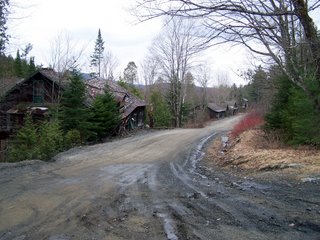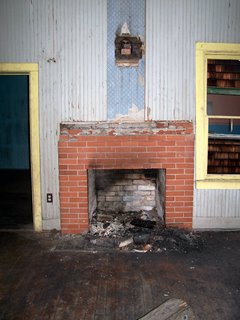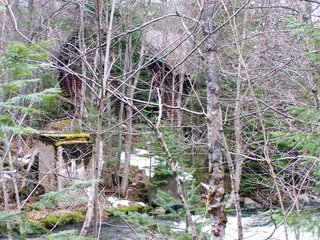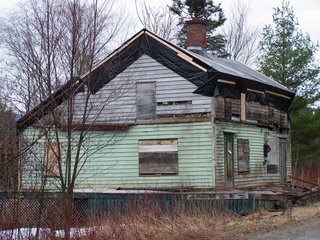 Main Street and only street in Tahawus, Ny
Main Street and only street in Tahawus, Ny Main Street taken from the DEC parking lot.
Main Street taken from the DEC parking lot. Some of the houses are overgrown by trees and brush, some are on the other side of the river.
Some of the houses are overgrown by trees and brush, some are on the other side of the river. You aren't supposed to enter the buildings for obvious reasons.
You aren't supposed to enter the buildings for obvious reasons. You just really need to watch your step.
You just really need to watch your step. Nice view of the Hudson River out back of this room but the stairs are gone.
Nice view of the Hudson River out back of this room but the stairs are gone. Here is one of the houses across the river. You can see a concrete pier in the lower left of the picture. There was probably a pedestrian bridge across the river.
Here is one of the houses across the river. You can see a concrete pier in the lower left of the picture. There was probably a pedestrian bridge across the river. The above buildings date from the later 1800's but this building, the McNaughton Cottage is the only building remaining from the 1840's. It is supposed to be restored.
The above buildings date from the later 1800's but this building, the McNaughton Cottage is the only building remaining from the 1840's. It is supposed to be restored.President McKinley was shot in Buffalo, NY Sept 7, 1901. By Sept 10th it looked like McKinley would recover, so Vice President Teddy Roosevelt decided to visit has family in the Adirondacks. This trip was also suppose to give the public confidence that the President was going to be alright. On Friday Sept. 13th the President took a turn for the worse and a call to the Vice President was placed immediately to the Tahawus Ny post office. However, Roosevelt was out hiking (this place is still a major trailhead to the high peaks). The VP was found on the trail to Mt. Marcy having lunch with his party. Roosevelt returned to the clubhouse by 5:15 PM. He didn't leave immediately though because he didn't want "stand beside those people who are suffering and anxious". A phone call at 10 PM convinced Roosevelt that he had to return to Buffalo. This involved a 35 mile trip over rain soaked dirt roads to get to the railhead in North Creek, NY. Roosevelt left Tahawus at 10:30PM and didn't get to the train station until 5AM the next morning. Mckinley had died during that night at 2:15AM. Roosevelt was sworn in as President when he reached Buffalo.

1 comment:
great photos and a fascinating history...thanks for this series!
Post a Comment